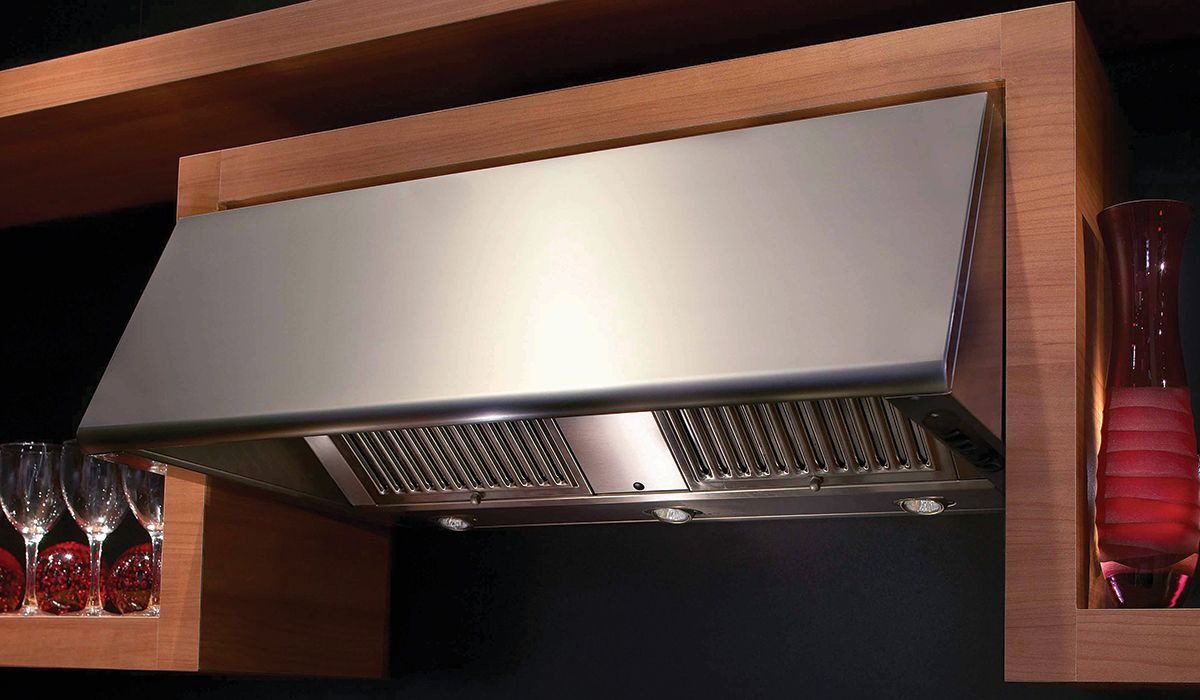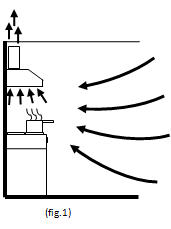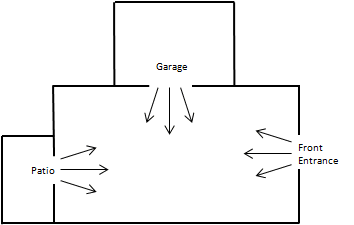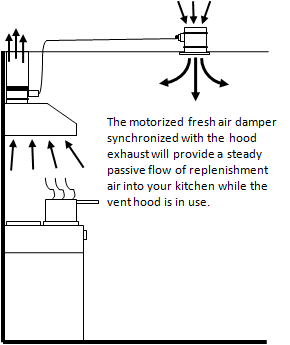About MakeUp Air

About Makeup Air: Negative Air Pressure and Fresh Air Infiltration
About Make-up Air: Negative Air Pressure and Fresh Air Infiltration
What Is Negative Air Pressure?
In recent years, residential homebuilders have greatly increased the energy efficiency of the houses being built by better sealing and insulating them from outside air. By encapsulating the home from leaking air in or out, the builders are met with a whole new set of challenges, one of which is negative air pressure created by high CFM (cubic feet per minute) kitchen exhaust hoods.
Negative air pressure is essentially your home creating a low-level vacuum inside itself to try and draw replenishment air from any opening it can find to the outside. Older, less efficient homes could balance the internal air pressure by air “infiltration” or “exfiltration.” Infiltration meaning external air from the outside entering the home, and exfiltration meaning internal air escaping to the outside. This type of air exchange or “leakage” in residential homes was mostly due to exterior walls, attics, doors, and windows not being sealed as tightly as they are today.
To maintain higher levels of efficiency while heating and cooling, the air leakage needs to be reduced or eliminated. And by reducing air from entering and exiting your home, the internal pressure can become compromised if the air is not properly exchanged.
How Is Negative Air Pressure Created by the Kitchen Exhaust System?
A high CFM kitchen ventilation system can deplete the air supply inside your home rapidly (fig.1) while exhausting your cooking surface. For example, a 600 CFM (cubic feet per minute) vent hood can deplete the air in a kitchen with a 10ft ceiling that is 10ft wide and 10ft deep (length x width x depth = cubic feet) in less than 2 minutes.
A residential single-family home ranging in size from 2,500 to 3,500 square feet can contain approximately 25,000-35,000 cubic feet of air inside it. If a kitchen vent hood is exhausting 600 CFM (cubic feet per minute), then it would take less than 1 hour to exhaust the cubic foot air equivalency of your entire home to the outside. A properly installed HVAC system’s air exchange rate will be able to maintain a relatively stable air pressure balance in your home, but is not designed or calibrated to compensate for the air lost during the intermittent use of a high CFM kitchen exhaust hood. This could lead to negative air pressure in your home.


How Does Negative Air Pressure Affect Your Home?
Exhausting the cooking surface properly is necessary to maintain a healthy environment inside your home. The primary function of a kitchen range hood is to capture, contain, and exhaust smoke, grease, heat, and odors to the outside of your house. This reduces the amount of unhealthy air and toxins that are being released into your internal air supply while cooking food. But without providing replenishment air or “makeup air” from outside your home, the kitchen exhaust system will begin to create a level of negative air pressure. Without a way to replenish the exhausted air, over time your kitchen ventilation system will begin to lose efficiency (fig.2).
And with less air in your home to exhaust, your vent hood cannot maintain the manufacturer’s CFM rating. This will result in a failure to capture and evacuate potentially hazardous and unhealthy air.
There are many ways for outside air to enter your home, even if it is built to the highest efficiency standards. A tightly sealed home will try and balance the negative air pressure created by a high CFM kitchen exhaust hood by pulling from the largest and most convenient openings to the outside.
One of the most common ways is through entry doors. And in some cases, negative air pressure could even stall or reverse the airflow in combustion vents (combustion vents meaning passive exhausts that rely on the buoyancy of hot air to lift and exhaust) like chimneys and furnace exhausts.
This could result in large amounts of outside air containing dust, toxins, and allergens rapidly entering your living space. Ground-level toxins drawn in from front and patio entrances could include dust, pollen, spores, or herbicides. And the garage entrance could potentially draw in carbon monoxide from car exhaust as well as paint, fuel, and chemical vapors from stored items. None of these are ideal sources of air replenishment for a home.

What is the Solution?
By creating a makeup air infiltration point localized to your kitchen ventilation system, the air is replenished at a slower and more controlled rate during the operation of the kitchen vent hood. To do this effectively, the operation of the kitchen ventilation system needs to synchronize with the operation of the motorized fresh air damper. The damper needs to open only while air is being exhausted from your kitchen and remained tightly closed when not in use.
Synchronization of the fresh air damper with the kitchen vent hood can be achieved using the Residential Makeup Air System (RMAS) from CCB Innovations
(PATENTED US 9,263,214 B2). This allows the operation of any kitchen exhaust system to connect to a fresh air damper 3-5ft away from the exhaust hood to bring in fresh, clean, healthy air to balance the pressure change in your home.
By maintaining an equivalent air exchange rate, the potential for negative air pressure during operation of your kitchen vent hood is significantly reduced. This will provide a healthier and cleaner air supply inside your home.
Even if not required in your area for residential homes, installing a fresh air intake with a high CFM kitchen ventilation system is always a good idea. And because the Residential Makeup Air System (RMAS) by CCB Innovations is universal to high CFM vent hoods, it can be installed in any new home, or even retro-installed, in an existing home to provide a cleaner and more balanced air supply for you and your family.

